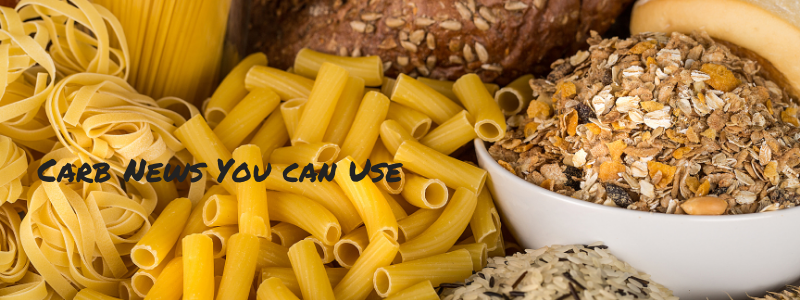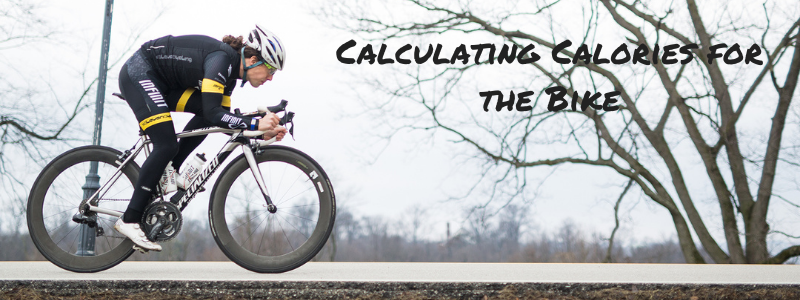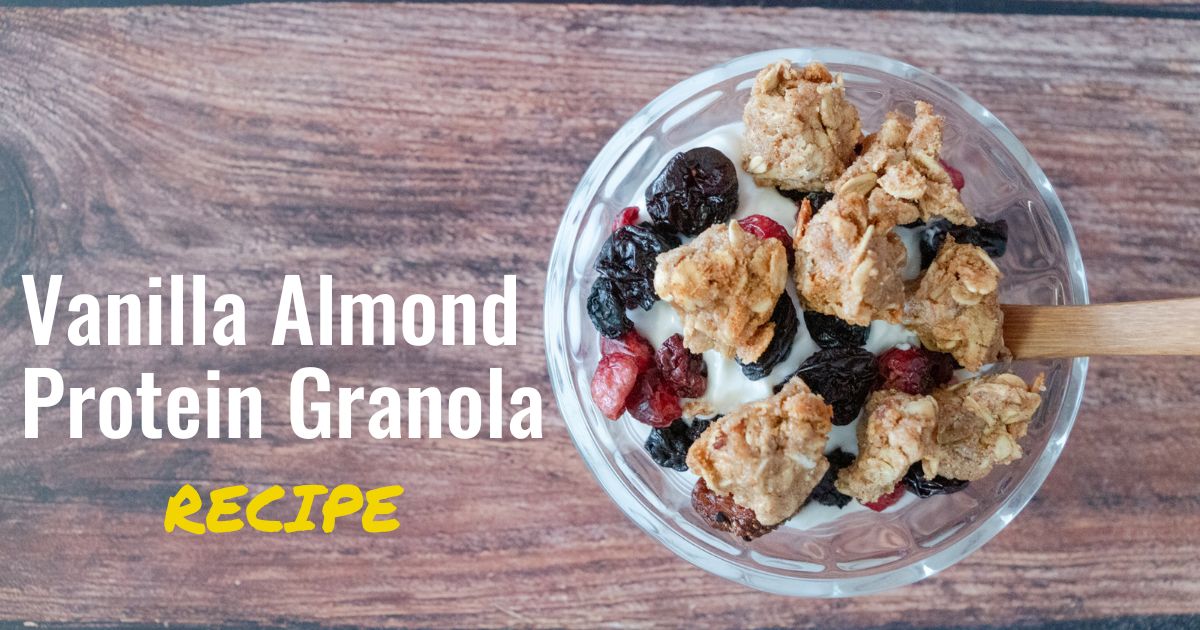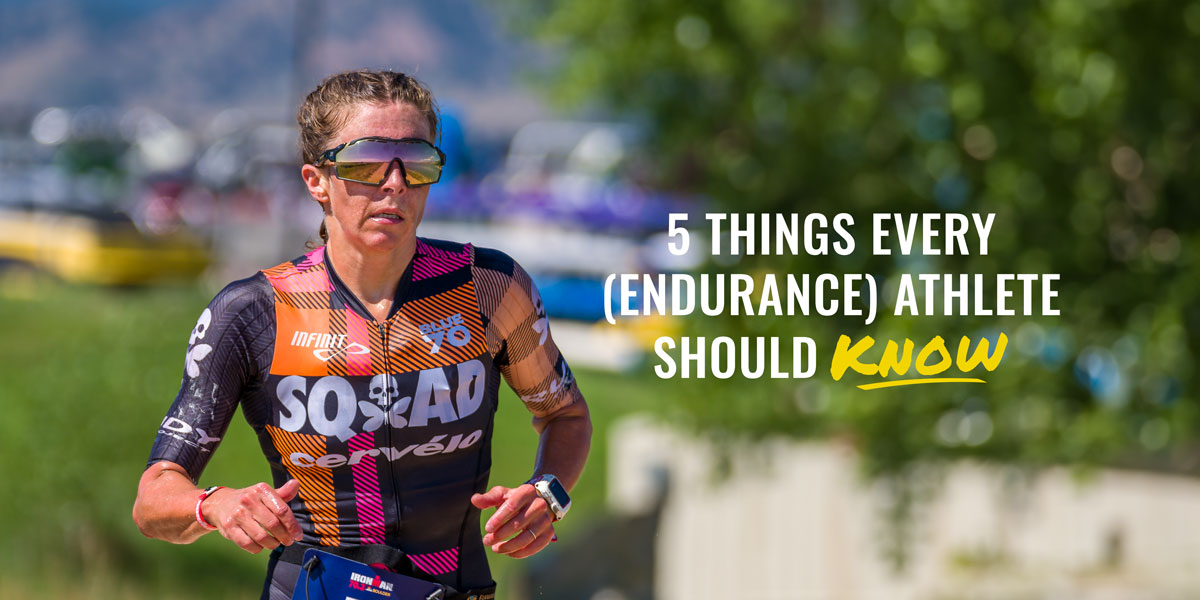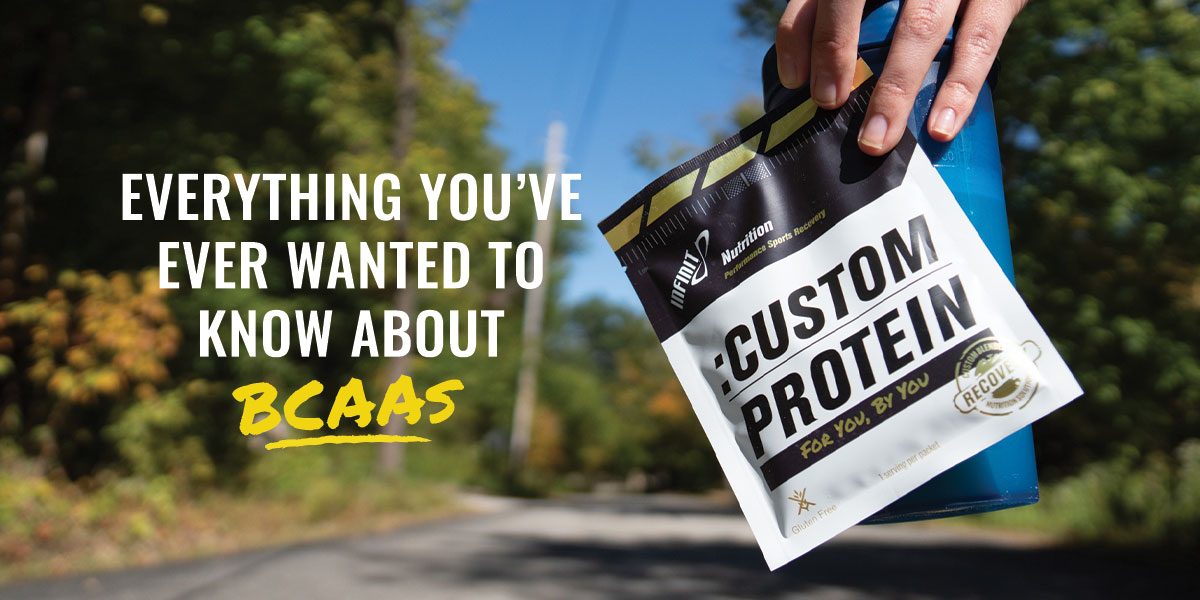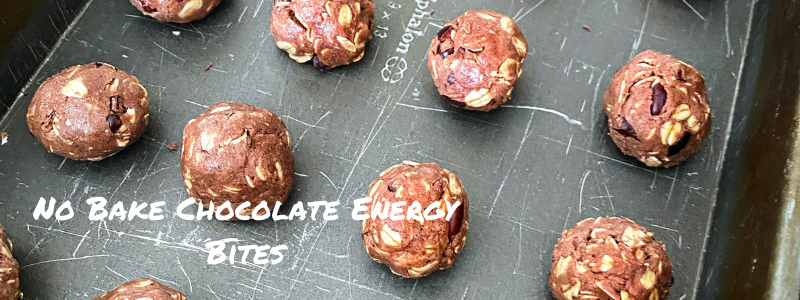Maintaining Peak Endurance Performance After 40
- Jul 13, 2015
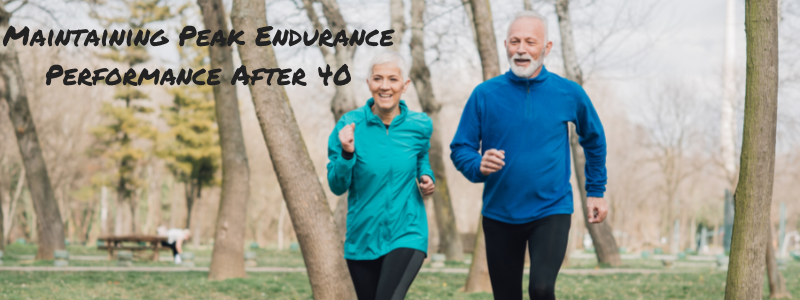
Kimberly J. Mueller, MS, RD, INFINIT Sports Nutritionist
Much of the research on aging and endurance performance suggests that there are physiological and nutritional changes that start occurring between the ages of 35 and 40 years that may limit endurance performance. Several master athletes complain of weight gain, slowed recovery time, nagging injuries, and diminished performance. Yet, many master athletes continue to conquer the running scene, beating their younger counterparts. Look at 42 year-old Yekaterina Podkopayeva, a female Russian distance runner who ran 1500 meters in less than 4 minutes. Or marathoner Jack Foster who conquered 26.2 miles in 2:19 at the age of 41. As simple as it may sound, peak performance for all ages relies on 2 factors: smart training and proper nutrition.
In order to reach peak performance, it is essential to combine proper nutrition with smart training. The following analogy is appropriate: an athlete can hike halfway up the mountain with good nutrition or proper training alone but in order to reach the peak, both have to be followed. This becomes an especially relevant issue in aging athletes. Several athletes have reported that they feel like they are stumbling down the mountain rather than climbing it. Could this be a result of the physiological changes associated with aging? Or is it a result of improper training and poor nutrition? There is controversial research in this field, but many scientists believe that physiological changes that occur with aging can be thwarted or at least lessened with a healthy lifestyle.
Aging and Aerobic Performance
It is well documented that personal best performances tend to decline after the age of 30-35, perhaps due to a decline in maximal aerobic capacity (VO2 max) that occurs even in highly trained master athletes.1 The maximal aerobic capacity declines by about 5 ml/kg per minute per decade beginning at age 25, with an accelerated decline after the age of 65.2 This decline in maximal aerobic power is like adding 30 seconds to a 10k personal best each year. It is thought that some of this decline may be associated to a progressive decrease in physical activity, whether it be total volume or intensity of training.
The volume of activity tends to be a more relevant issue when looking at female master runners, as a mere drop in total weekly running mileage by approximately 15 miles may cause maximal aerobic capacity to decline by 2.4% each year or approximately 10 mL/kg per minute per decade.3 Female master athletes who do not replace estrogen upon menopause report similar losses in maximal aerobic power.3 In order to sustain a level of maximal aerobic power conducive to peak performance, it is recommended that female masters’ athletes maintain or increase their volume of training and replace estrogen upon menopause.
For men, a decline in the intensity of training and related losses in lean body mass tend to have a detrimental effect on maximal aerobic power. A loss of approximately 3 kg of lean mass could cause a 4.6% drop in maximal aerobic power each year.3 Fortunately, losses in lean mass can be combated by consistently engaging in strength training for a period of at least 8-weeks.4 Furthermore, there have been claims that master athletes who maintain an intense training program that includes interval training may prevent decreases in lean body mass and consequent maximal aerobic power, allowing them to maintain peak performance for several years. A recent study at Ball State University found that runners who carried out high-intensity interval training into their 40s had no significant losses in aerobic power while runners who trained only at moderate intensities lost about 9% of their aerobic power over a period of 10 years. Therefore, in order to thwart the aging effects on lean body mass and maximum aerobic power, it is recommended that male master athletes include both strength training and interval training in their weekly workout routine.
Aging and Musculo-Skeletal Function
Another commonly observed effect of aging is diminished musculo-skeletal function, which includes decreased muscle strength, mass, and flexibility. Muscle strength, which seems to parallel muscle mass, tends to peak in most individuals at about age 25, plateaus through 35-40 years, and then progressively declines with approximately 25% of peak strength lost by age 65 years.1,5 In 1994, it was estimated that 40% of women between the ages of 55 and 64 years, 45% between the ages of 65 and 74 years, and 65% between the ages of 75 and 84 years couldn’t lift 10-pounds.6 This age-associated loss of skeletal muscle mass and consequent strength can be attributed to several factors, including reduced muscle fiber recruitment and consequent alterations in fiber type composition (fast twitch versus slow twitch) that occur when physical activity decreases.
At Ball State University, Dr. David Costill and colleagues have discovered that proportionate gains in slow twitch muscle fibers are greater in master athletes than younger athletes, who tend to benefit from gains in fast twitch muscle fibers with similar training. However, most of the changes in muscle fiber composition seem to result from a reduced training load. Those who stop training will have a higher percentage of slow twitch than fast twitch muscle fibers and an overall reduction in muscle mass. The alterations in body and fiber type composition will naturally lead to slower racing times.
Fortunately, unfavorable alterations in body and fiber type composition can be stopped with a training program that includes such high intensity workouts as intervals, tempo runs, and hill running as well as some weight training. High-intensity training increases the recruitment of fast twitch fibers, helping to prevent progressively slower running times. A 12-week weight training program can increase a cross sectional area of muscle tissue by as much as 17%, even in the elderly.8,9 The increased muscle mass will not only help with overall strength, but it will also help enhance musculo-skeletal function by stabilizing joints, thereby reducing risk for injury.
Aging and Bone Structure
More than 25 million people in the United States alone are affected by osteoporosis, leading to as many as 1.5 million bone fractures per year. Bone fractures occur when calcium found within the bones is lost, causing the bones to become porous. With aging, there is a progressive decline in calcium content within the bones that begins around age 30, increasing risk for stress fractures and development of osteoporosis. Other risk factors that exacerbate the aging effect on bone include smoking, excessive caffeine or alcohol intake, inactivity, and poor nutrition. Women tend to be more affected by osteoporosis, especially upon menopause when levels of estrogen, a bone protective hormone, are significantly reduced. In fact, it is estimated that one-third of all women will experience osteoporosis-related fractures in their lifetime.10 Fortunately, bone health can be maintained throughout the lifespan with a healthy lifestyle, including proper training and a healthy diet.
Good news for runners: Running, a weight-bearing exercise, has been shown to slow and even reverse bone mineral loss on loaded bones through the eighth decade of life provided that a healthy lifestyle is followed.5 One population that remains at high risk, however, are menopausal runners, particularly those runners within the first 5 years of menopause. The decreased estrogen production is associated with increased turnover and loss of bone and a decreased efficiency of calcium.12,13 It is thought the exercise load in menopausal runners not using hormone replacement may need to be increased to reap the same benefits on bone.14 Engaging in a weight training program is one way to increase the load on the bones. Hormone replacement may be considered in some postmenopausal women since running alone seems to provide little protection for bone mass and low estrogen levels can double risk for stress fractures.
Also a relevant factor in attainment of peak bone health, especially on bones not exposed to the exercise load associated with running (i.e., spine, hip), is nutrition. Perhaps the most influential nutritional factor affecting bone health is energy balance. Many runners unintentionally fail to consume enough calories to meet their training demands while other runners are chronic dieters who intentionally restrict calorie intake, ultimately leading to a negative energy balance. Unfortunately, a chronic negative energy balance will contribute to lost bone mass, leading to an eight-fold risk for stress fractures.17 Weight cycling, as seen in chronic dieters, causes lower spinal and distal radius bone mineral density in women ages 29-46 years, exacerbating the risk for osteoporosis especially upon menopause.18 In order to prevent a negative energy balance, it is recommended that master’s athletes consult with a Registered Dietitian, who will help determine an energy intake that is appropriate to meet training demands.
Also associated with a negative energy balance are nutritional deficiencies, with the most relevant nutrient for bone health being calcium. Because calcium is a major component of bone mineral, an adequate intake of calcium is necessary for proper bone growth and maintenance. In response to the epidemic of osteoporosis, The National Academy of Sciences recently boost calcium recommendations, with 1,000 mg being recommended for ages 19-50 years and 1,200 mg being recommended for ages 51 years and up.19Menopausal runners not using hormone replacement may need as much as 1,500 mg of calcium each day.
Unfortunately, deficiencies in calcium are common, especially among women and those restricting their energy intake, which compounds the risk for bone fracture. A study of female masters runners discovered an average dietary calcium intake of only 598 mg, roughly half the recommended amount.20 A calcium restriction over a mere 9-weeks can increase bone turnover, leading to reduced bone mass.21 In order to prevent calcium deficiencies, it is recommended that master’s athletes consume 3-4 servings of dairy each day (e.g., 1-cup milk, soy milk, yogurt, or cottage cheese). A calcium supplement, preferably in the citrate or carbonate form, may also be used to help boost calcium intake.
Maintenance of the mechanical competence of the skeleton relies on engagement in weight-bearing exercise and meeting the nutritional demands of training. Avoidance of stress fractures and other injuries is essential, especially as an athlete ages. The long recovery period after an injury entails a reduction in training volume and intensity, speeding the physiological detriments of aging on other performance related factors.
Table 1. The Effect of Aging on Performance
| Physiological Change | How it Affects Performance | How to Offset This Change |
| Loss of skeletal muscle mass | Decreased strength |
|
| Decline in VO2 MAX | Slower times |
|
| Loss of bone mass | Increased risk for injury |
|
| Decreased metabolism | Increased body fat and slower race times |
|
| Menopause | Decreased VO2max, loss of bone mass |
|
Aging and Nutrition
Energy Needs
Many master athletes complain of weight gain despite following the same nutritional patterns they did in previous years. Weight gain in master athletes may be attributed to changes in resting metabolic rate (RMR), which entails 60-75% of an individual’s total daily energy expenditure.22 RMR decreases by about 10% from early childhood to adulthood and another 10% from adulthood to the age of retirement.5 Several factors have been shown to directly influence RMR, including thyroid hormones, genetics, body and/or environmental temperature, and stress. Other factors related to RMR are body surface area, total body weight, lean body mass, gender, age, and aerobic fitness. Of these factors, there seems to be the strongest correlation between lean body mass and RMR.23 When metabolically active muscle tissue is lost and replaced with metabolically inert depot fat, RMR inevitably declines.
Fortunately, RMR can be kept elevated in master athletes who continue to train at high levels while meeting individual nutritional needs. In most individuals, RMR seems to be positively affected by endurance training.24 Resistance training also has been reported to boost RMR.25 Increasing the intensity of endurance- or resistance-training may compound the beneficial effect on RMR.26 However, the benefits of training on RMR can be diminished with poor eating habits. Caloric restriction, especially when combined with endurance training, results in catabolism of lean body mass and a related drop in RMR.27 In order to maintain an ideal metabolism, all athletes should eat small well-balanced meals every 3-4 hours until energy balance is achieved.
The Harris Benedict formula, which takes into consideration height, weight, age, and gender, is often used to estimate RMR (see table 2). Consequent daily energy requirements can be estimated by multiplying RMR by an activity factor based on daily physical activity (see table 3). Individuals desiring to gain or lose weight should increase or decrease calculated energy needs by 500 calories for a 1-pound weight gain or loss per week. Adjustments for weight loss should not exceed 1,000 calories, as catabolism of muscle tissue will occur leading to a compromised metabolic efficiency.
Table 2. Revised Harris Benedict Equations for Estimating Resting Metabolic Rate
| Males | 88.362 | + | (4.799 x height) | + | (13.397 x weight ) | – | (5.677 x age) |
| Females | 447.593 | + | (3.098 x height) | + | (9.247 x weight) | – | (4.330 x age) |
| Height in cm | Weight in kg | Age in yrs |
Table 3. Activity Factors
| Activity Factor | Description | Multiply RMR By |
| Very Light | Extremely sedentary, largely bed rest | 1.2-1.3 |
| Light | No planned activity, mostly office work | 1.5-1.6 |
| Moderate | Walking, stair climbing during the day | 1.6-1.7 |
| Heavy | Planned vigorous activities | 1.9-2.1 |
Macronutrient Needs
Macronutrient needs, including carbohydrate, fat, and protein, in master’s runners remain consistent with recommendations for the general endurance athlete population, yet needs are adjusted based on individual energy requirements. Table 4 shows estimated daily macronutrient needs based on the total amount of time spent training each day. Note that there seems to be less “physiologic forgiveness” or latitude for deficiencies in carbohydrates, which are the primary source of energy, and protein, which is a critical recovery nutrient.
Table 4. Estimated Daily Macronutrient Needs
| Daily Training Schedule | 1 hour or less | 1-2 hours | 2-3+ hours |
| Carbohydrate (55-70% of total calorie intake) | 3 g per lb body weight | 4 g per lb body weight | 5 g per lb body weight |
| Protein (12-15% of total calorie intake) | 0.55 g per lb body weight | 0.65 g per lb body weight | 0.75 g per lb body weight |
| Fat (20-30% of total calorie intake) | 0.5 g per lb body weight | 0.5 g per lb body weight | 0.5 g per lb body weight |
In order to maximize the storage of glycogen in the muscles, it is recommended to consume approximately 3-5 grams of carbohydrate per pound of body weight, which generally requires an athlete to cover about 2/3 their meal plate with such carbohydrate-rich foods as pasta, rice, cereal, and fruit. Athletes following this regimen will store anywhere from 1,400 to 1,800 calories worth of glycogen in the muscles, which will help prevent the dreaded “wall” in longer, more intense training bouts. Also of increased importance for masters’ athletes is the pre-race meal consumed a few hours prior to competition.
As means to top off glycogen stores and stabilize energy levels, a carbohydrate-based meal consisting of 300-500 calories should be consumed 1-4 hours pre-event; sample meals include a low-fat yogurt with a banana (~350 calories) and a powerbar with 8 ounces of Ultra Fuel (430 calories). The goal is to find foods that are well-tolerated and digested in time for race start; these meals will vary from athlete to athlete. Recommendations for supplementation with carbohydrate during exercise remain consistent at 30-60 grams per hour beyond the first hour of exercise. In order to enhance recovery, about ½ gram of carbohydrate per pound of body weight should be taken within the first 30 minutes post-exercise.
There is some debate about protein requirements in aging individuals, but most of the controversy stems from a fairly inactive elderly population. Athletes, in general, require more protein than their sedentary counterparts to allow for replenishment of amino acids oxidized during exercise and to provide additional raw material to replace any exercise-induced muscle damage.28 The research on master athletes engaged in endurance and/or resistance training indicate similar daily protein requirements (0.55-0.75 g per pound body weight) to younger athletes, with the upper end of the protein requirements recommended for those training for marathons and/or engaged in strength training. An individual assessment of protein needs is desirable for athletes on low-calorie diets, low-carbohydrate diets, or those in the beginning stages of an endurance- or strength-training program as needs may be elevated.
Recommended fat intake for master athletes are not different from the recommendations for the general population. A minimum of 10% of daily calories should originate from fat to ensure adequate intake of essential fatty acids. On the other side of the spectrum, no more than 30% of daily calories should come from fat. To help reduce risk for chronic disease, the majority of fat intake should derive from plants (i.e., avocado, nuts, seeds, olives).
Micronutrient Needs
Much remains to be learned about the effect of aging and activity on vitamin and mineral needs. As of today, it is unclear what is considered an “ideal” micronutrient intake for master’s athletes. Research on nutritional adequacy of older adults suggest that many fall significantly below the general recommended daily allowance for the following vitamins: vitamin A, vitamin D, vitamin E, vitamin C, vitamin B6, folate, thiamin, riboflavin, niacin, and vitamin B12.30,31Such nutrient deficiencies can compromise overall health and dramatically affect aerobic capacity, muscle strength, power, and endurance. Generally, diets that achieve energy balance and follow guidelines specified by the food guide pyramid will fulfill vitamin and mineral requirements. A daily multi-vitamin and mineral supplement with additional antioxidants will serve as a nutrition insurance agent. Research on any added benefit of nutritional supplements remains controversial.
Fluids
The body’s reliance on water for cooling, nutrient transport, joint lubrication, metabolic waste removal, and absorption is well established. When body water levels become low, called dehydration, performance declines dramatically and serious health implications may incur. Prevention of dehydration in master athletes becomes a very relevant issues due to physiological changes that occur with total body water, thirst sensation, and diminished kidney function combined with fluid loss during exercise. As one ages, total body water declines from a high of 80% in infancy to about 60-70% in older adults. Furthermore, thirst sensation, which helps with body water regulation, declines with a subsequent decrease in renal blood flow. The older kidney also struggles to concentrate urine adequately, leading to increased fluid requirements for disposal of waste product. Prevention of dehydration, therefore, becomes of paramount concern for those master athletes who want to continue to perform at peak levels.
Adequate hydration relies on consistent consumption of water or other low-calorie fluids throughout the day, to the point when urine flows clear. For reference, a daily energy expenditure of 2,000 calories requires a minimum daily intake of 64-80 ounces. Try finishing a 16-ounce water bottle every 2 hours to meet these needs.
In order to determine fluid needs during exercise, sweat rate should be determined by weighing in before and after exercise. Every pound of body weight lost during exercise is equivalent to approximately 16 ounces of fluid so if an athlete loses a pound every 30 minutes of exercise, fluids should be replenished at a rate of 16 ounces every 30 minutes. General recommendations for fluids during training include at least 16 ounces pre-exercise and another 5-12 ounces every 15-20 minutes during exercise. Water is a sufficient fluid replacement for training bouts under an hour; beyond an hour, sports drinks should be consumed. Sports drinks are also desirable post workout to aid in glycogen repletion, rehydration, and electrolyte replacement. Approximately a pint of fluid should be consumed for every pound of body weight lost during exercise.
Training in hot environments can increase risk for dehydration, especially in older athletes who have marked age-related differences in the blood flow to the skin and body fluid balance. The following preventative techniques have been suggested for older athletes:
- Acclimate. Perform about ½ your usual exercise on the first few days of hot weather.
- Hydrate: Drink as much fluid as tolerable 30-45 minutes before exercise and at least 8 ounces every 15 minutes during exercise. After exercise, force fluid consumption and drink more than that which satisfies your thirst over a 2-hour period. Eat foods with high water content. Use a sports drink to restore lost electrolytes.
- Use common sense. If you are concerned that it is too hot to exercise, it probably is.
- Maintain a high fitness level. The best predictor of toleration to the heat is maximal aerobic capacity.
- Learn about exercise in heat. Pay attention to warning signs and symptoms of dehydration, heat exhaustion and heat stroke.
- Know about medications. Many prescription drugs can affect thermoregulation in hot environments. Ask your health provider about the effects of medication.
Conclusion
Everyday, there seems to be news of “old” people conquering such amazing endurance feats as marathons, ultra marathons, Ironman triathlons, mountain climbing, thousand-mile hikes and swimming miles and miles in ocean waters. These athletes serve as role models, evidencing that a vigorous lifestyle can be maintained even at “old” age. In reviewing the research on master athletes, the following recommendations can be made to help continue peak performance past the age of 40:
- Continue a training routine that includes such high-intensity workouts as intervals, tempo runs, and hill training.
- Engage in resistance training 2-3 times per week to help maintain lean body mass.
- Attain energy balance to help maintain bone health and promote peak metabolic efficiency.
- Ensure adequate calcium intake for strong bones by consuming 1,000-1,200 mg per day.
- *Note: Menopausal runners not on hormone replacement may need 1,500 mg per day.
- Continue to favor carbohydrates as the primary fuel source, consuming 3-5 grams per pound of body weight each day.
- Follow protein guidelines (0.55-0.75 grams per pound of body weight) to aid in muscle recovery.
- Consume a minimum of 10% of your total calories from fat yet don’t exceed 30%.
- Follow a well-balanced meal plan using the Food Guide Pyramid to ensure adequate vitamin and mineral intake.
- Consider taking a multi-vitamin and mineral supplement with antioxidants as a nutrition insurance agent.
- Be more aware of hydration, consuming fluids even without feeling thirsty.
Kimberly J. Mueller, MS, RD, is a registered sports nutritionist and competitive endurance athlete who provides nutritional counseling and meal planning to athletes around the world.
Works Cited
- 1. Astrand PO. Exercise physiology of the mature athlete. In: Sutton JR, Brock RM, eds. Sports Medicine for the Mature Athlete. Indianapolis, Ind: Benchmark Press; 1986: 3-13.
- 2. Shephard RJ. Physical Activity and Aging. 2nd Ed. London: Croom Helm Publishing, 1987.
- 3. Hawkins SA, Marcell TJ, Victoria Jaque S, Wiswell RA. A longitudinal assessment of change in VO2max and maximal heart rate in master athletes. Med Sci Sports Exerc. 2001;33(10): 1744-1750.
- 4. Fiatarone MA, Marks EC, Ryan ND, Meredith CN, Lipsitz LA, Evans WJ. High intensity strength training in nonagenarians. Effects on skeletal muscle. JAMA. 1990; 263: 3029-3034.
- 5. Shephard RJ. Aging and Exercise. In: Encyclopedia of Sports Medicine and Science, TD Fahey (Editor). Internet Society for Sport Science: http://www.sportsci.org. 7 March 1998.
- 6. Fiatarone MA, O’Neill EF, Ryan Nd, et al. Exercise training and nutritional supplementation for physical frailty in very elderly people. N Engl J Med. 1994; 330: 1769-1775.
- 7. Coggan AR, Spina RJ, King DS, Rogers MA, Brown M, Nemeth PM, Holloszy JO. Skeletal muscle adaptations to endurance training in 60- to 70-year-old men and women. J Appl Physiol. 1992; 47(3): 1780-1786.
- 8. Brown AB, McCartney N, Sale DG. Positive adaptations to weight-lifting in the elderly. J Appl Phsysiol. 1990; 69(5): 1725-1733.
- 9. Frontera WR, Meredith CN, O’Reilly KP, Knuttgen HG, Evans WJ. United States strength conditioning in older men: skeletal muscle hypertrophy and improved function. J Appl Physiol. 1988; 64(3): 1038-1044.
- 10. Riggs BL, Melton LJ. The prevention and treatment of osteoporosis. N Engl J Med. 1992; 327: 620-627.
- 11. Recker RR, Davies M, Hinders SM, Heany RP, Stegman MR, Kimmel DB. Bone gain in young adult women. JAMA. 1992; 276(3): 238-240.
- 12. Gallager JC, Goldgar D, May A. Total bone calcium in women: effect of age and menopause status. J Bone Miner Res. 1987; 2: 491-496.
- 13. Heany RP, Recker RR, Stegmen MR, Moy AJ. Calcium absorption in women: relationships to calcium intake, estrogen status, and age. J Bone Miner Res. 1989; 4:469-475.
- 14. Gibson JH, Harries M, Mitchell A, Godfrey R, Lunt M, Reeve J. Determinants of bone density and prevalence of osteopenia among female runners in their second to seventh decades of age. Bone. 2000; 26(6): 591-598.
- 15. Hawkins SA, Wiswell RA, Jaque SV, Constantino N, Marcell TJ, Tarpenning KM, Schroeder ET, Hysloop DM. The inability of hormone replacement therapy or chronic running to maintain bone mass in masters athletes. J Gerontol A Biol Sci Med Sci. 1999; 54(9): M451-455.
- 16. Myburgh KH, Hutchins J, Fataar AB, Hough SF, Noakes TD. Low bone density is an etiologic factor for stress fractures in athletes. An Int Med. 1990; 113: 754-759.
- 17. Bennel KL, Malcolm SA, Thomas SA, Ebeling PR, McCroy PR, Wark JD, Brukner PD. Risk factors for stress fractures in female track and field athletes: A retrospective analysis. Clin J Sports Med. 1995; 5(4): 229-235.
- 18. Fogelholm M, Sievanen H, Heinonen A, Virtanen M, Uusi-Rasi K, Pasanen M, Vuori I. Association between weight cycling history and bone mineral density in pre-menopausal women. Osteo Int. 1997; 7(4): 354-358.
- 19. Food and Nutrition Board. Dietary reference intakes (DRIs) for calcium, phosphorus, magnesium, vitamin D, and fluoride. 1997. Washington DC: National Academy of Sciences.
- 20. Beshgetoor D, Nichols JF, Rego I. Effect of training mode and calcium intake on bone mineral density in female master cyclists, runners, and non-athletes. Int J Sports Nutr Exerc Metab. 2000; 10: 290-301.
- 21. Talbott SM, Rothkopf MM, Shapses SA. Dietary restriction of energy and calcium alters bone turnover in younger and older female rats. J Nutr. 1998; 128(3): 640-645.
- 22. Poehlman E. A review: exercise and its influence on resting energy metabolism in man. Med Sci Sports Exerc. 1989; 21: 515-525.
- 23. Webb P. Energy expenditure and fat-free mass in men and women. Am J Clin Nutr. 1981; 34: 1816-1826.
- 24. Poehlman E, Danforth E. Endurance training increases metabolic rate and norepinephrine appearance rate in older individuals. Am J Appl Physiol. 1991; 21: E257-E261.
- Toth M, Poehlman E. Resting metabolic rate and cardiovascular disease in resistance- and aerobic-trained middle-aged women. Int J Obesity. 1995; 19: 691-698.
- Byrne HK, Wilmore JH. The relationship of mode and intensity of training on resting metabolic rate in women. Int J Sports Nutr Excerc Metab. 2001; 11: 1-14.
- Willmore J, Costill D. Physiology of Sport & Exercise (2nd Ed). Champaign, IL: Human Kinetics, 1999.
- Evans WJ, Gannon JG. The metabolic effects of exercise-induced muscle damage. In Exercise and Sport Sciences Reviews (Vol 19), JO Holloszy (Ed). Baltimore: Williams & Wilkins. 1991: 99-125.
- Lemon PWR. Effects of exercise on dietary protein requirements. Int J Sports Nutr. 1998; 8:426-447.
- Munro HN, Suter PM, Russell RM. Nutritional requirements of the elderly. Ann Rev Nutr. 1987; 7: 23-49.
- Murphy SP, Subar AF, Block G. Vitamin E intakes and sources in the United States. Am J Clin Nutr. 1990; 52: 361-367.
- Kenney WL. The older athlete: exercise in hot environments. Sports Sci Exch. 1993; 3.

